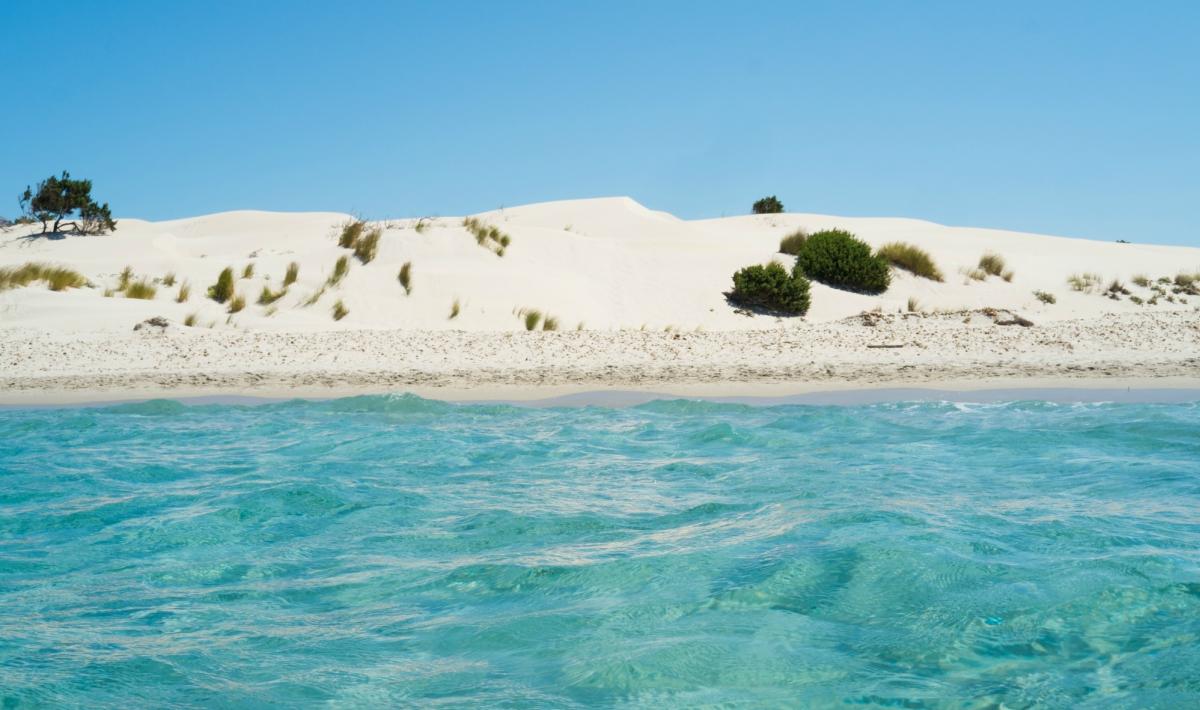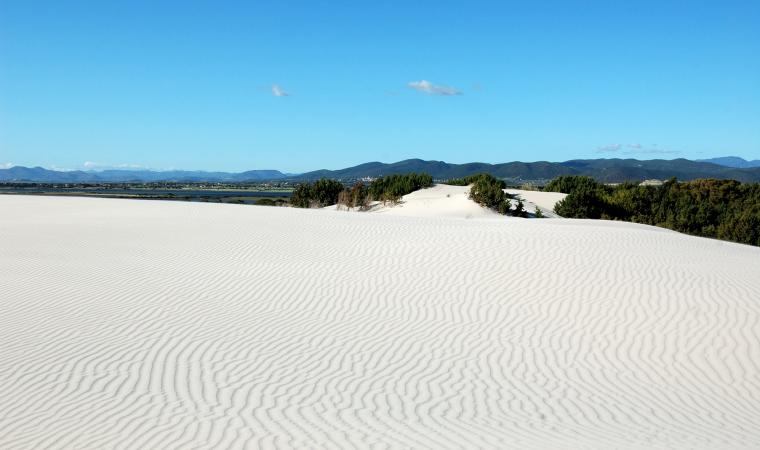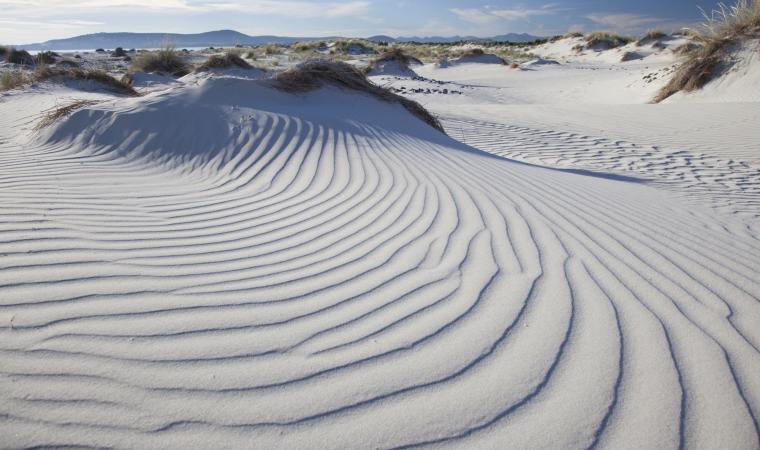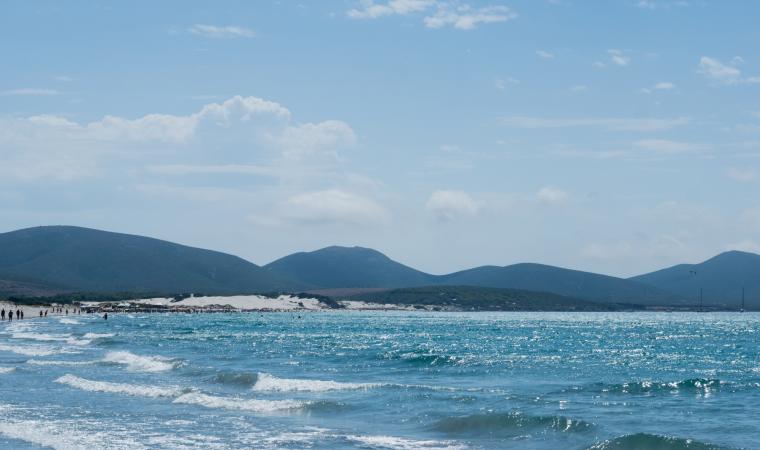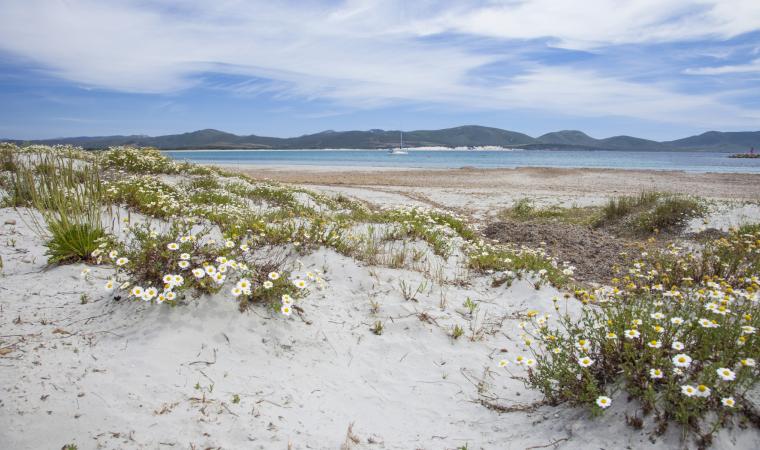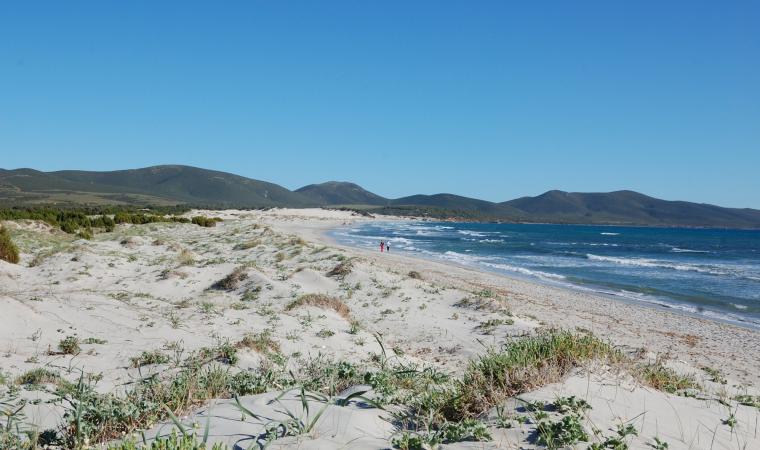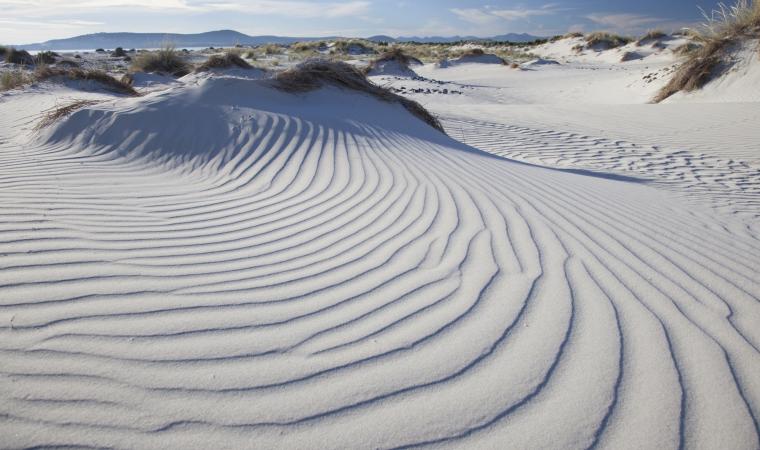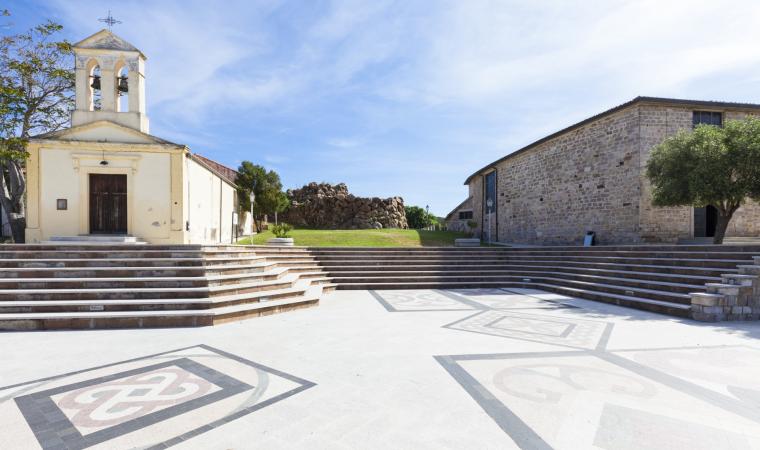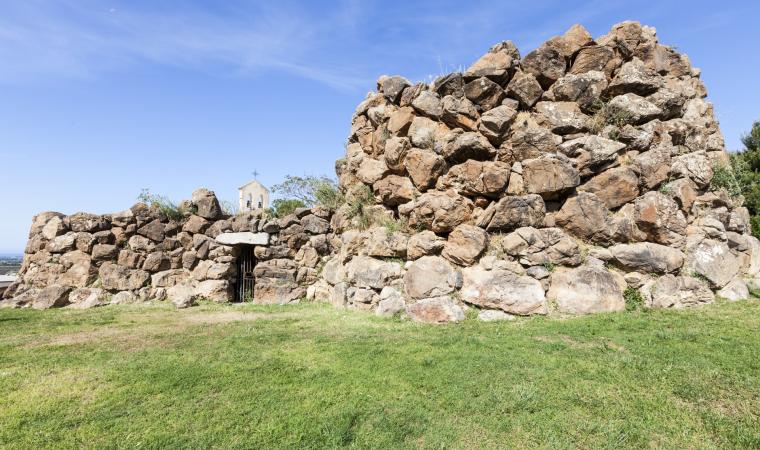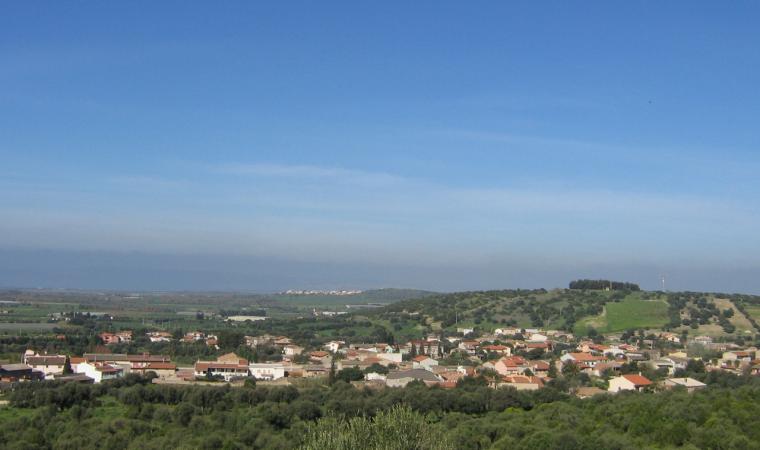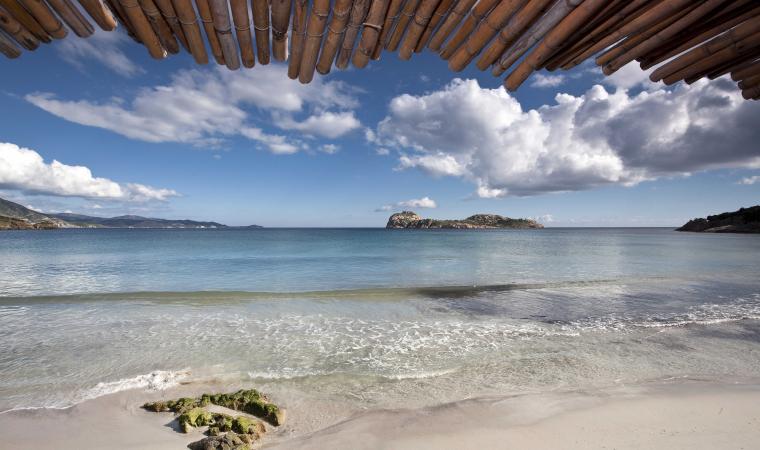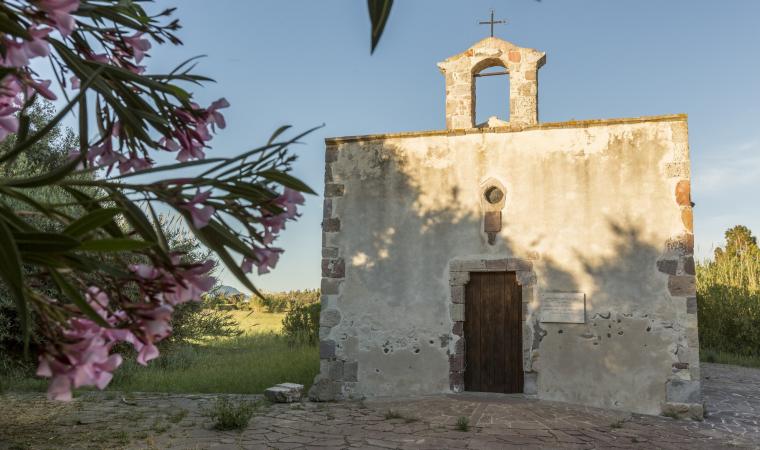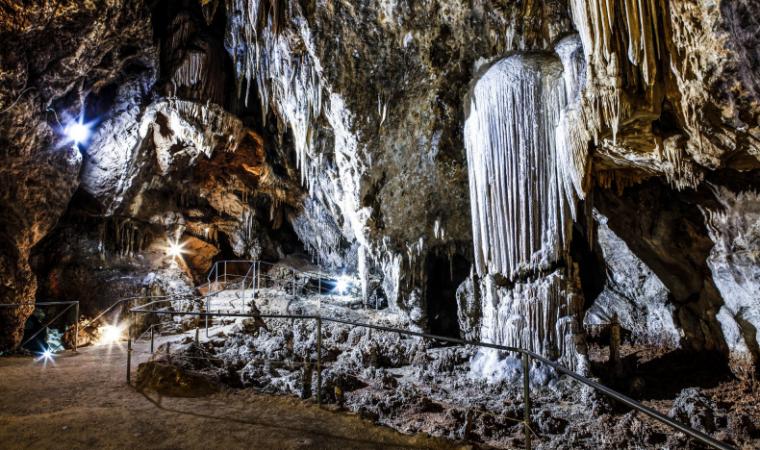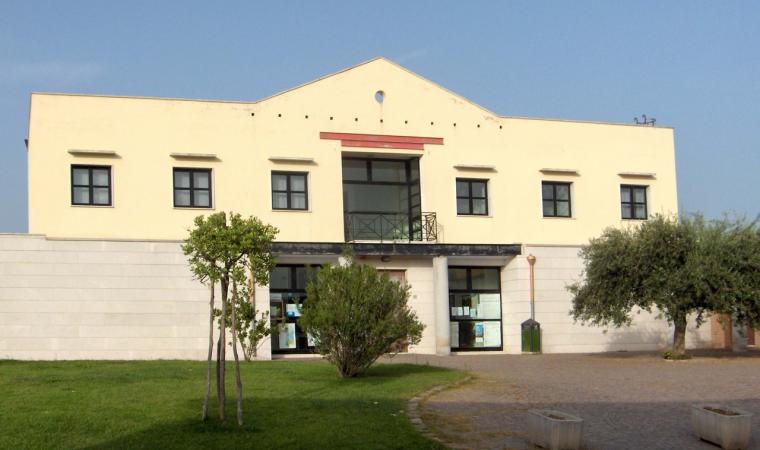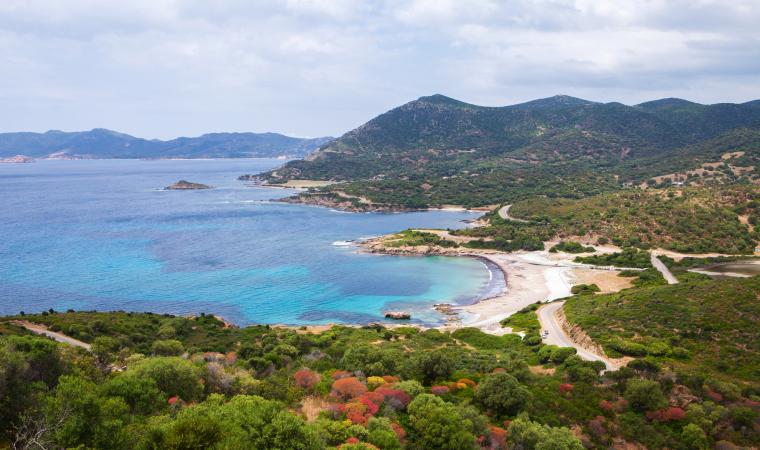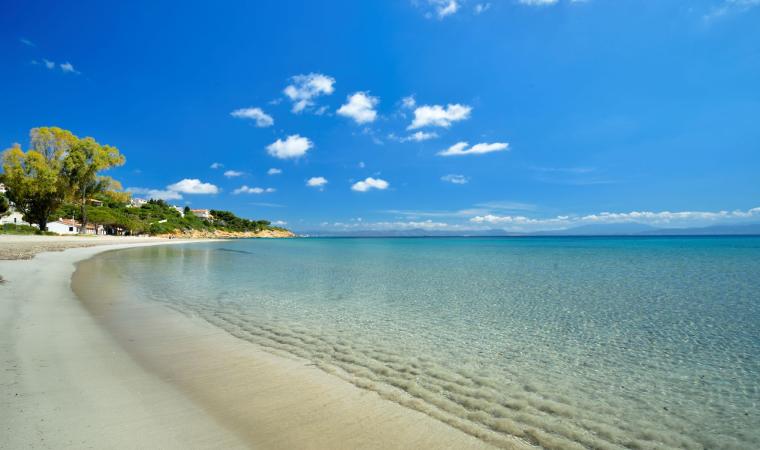Little coves with pink sand and crystalline waters, long, white, deserted beaches, rocks with breath-taking seabed, ponds inhabited by flamingos, and, inside, groves, vineyards, grottos, culture and culinary traditions. This is Porto Pino, in the territory of Sant’Anna Arresi, made even more beautiful, to the east, by the homonymous promontory covered in oaks, ancient juniper trees and very rare Aleppo pines – according to legend, the wood favoured by the Phoenicians to build their ships. The other side is dominated by Mediterranean scrub.
The Porto Pino beach is about four kilometres long, divided in two parts by an old sea outlet for the ponds. The “first beach”, not far from the parking area, features greyish sand while the “second”, nestled between lagoon and pine grove, has white sand and meets Is Arenas Biancas, tall, white dunes in the territory of Teulada – also called Le Dune, another awe-inducing expanse, one kilometre long, of soft sandy hills that reach up to 3 metres of height.
The Porto Pino coast, characterised by a shallow seabed that makes it perfect for children, is accessible to disabled people and features plenty of parking space (for campers as well) and all necessary services: rental of beach equipment, hotels and camping sites, cafés and restaurants. It is also the perfect destination for surfers all year round and much beloved by divers and fishermen. A canal crosses the strip of sand and the pine grove in the part of the beach belonging to Sant’Anna Arresi, and connects sea and the lagoon area, consisting of the Maestrale, Porto Pino, Corvo, Is Brebeis and Foxi lagoons.
Nearby, always in the territory of the Sulcis commune, there is also the beautiful Spiaggia dei Francesi (Frenchmen’s Beach), in Porto Pinetto, a half-moon of fine white sand with shells and coral fragments that dives into the sea in shallow waters that change from emerald green to turquoise and azure. After the beach, dive into the culture of Sant’Anna Arresi, a lovely little town that features Nuraghe, called Arresi, right in the centre of the town between the two churches, the old and the new, dedicated to Sant’Anna – the town is named after the saint.

